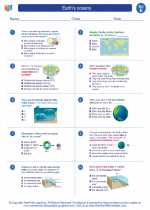Cells: The Building Blocks of Life
Cells are the basic unit of life. They are the smallest structural and functional unit of an organism, and all living things are composed of one or more cells. There are two main types of cells: prokaryotic cells, which are simpler and do not have a nucleus, and eukaryotic cells, which are more complex and have a nucleus.
Cell Structure
Cells have a variety of structures that allow them to carry out their functions:
- Cell Membrane: The outer boundary of the cell that separates the cell's internal environment from the external environment. It controls the movement of substances in and out of the cell.
- Nucleus: Found in eukaryotic cells, the nucleus contains the cell's genetic material (DNA) and controls the cell's activities.
- Cytoplasm: The gel-like substance inside the cell where organelles are located and where many of the cell's activities take place.
- Organelles: Structures within the cell that have specific functions, such as the mitochondria (energy production), endoplasmic reticulum (protein synthesis), and Golgi apparatus (processing and packaging of proteins).
Cell Functions
Cells perform a variety of functions that are essential for life:
- Metabolism: Cells carry out chemical reactions to obtain and use energy from nutrients.
- Growth and Reproduction: Cells can grow in size and reproduce to create new cells.
- Response to Stimuli: Cells can respond to changes in their environment.
- Homeostasis: Cells maintain a stable internal environment despite external changes.
Studying Cells
When studying cells, it's important to understand the following concepts:
- Cell Theory: The fundamental idea that all living organisms are composed of cells, cells are the basic unit of structure and function in living organisms, and all cells come from pre-existing cells.
- Microscopy: The use of microscopes to observe and study cells. Understanding the different types of microscopes and how they work is crucial for cell research.
- Cell Types: Knowing the differences between prokaryotic and eukaryotic cells, as well as the specialized cells found in multicellular organisms.
- Cell Processes: Understanding the processes that occur within cells, such as photosynthesis, cellular respiration, and protein synthesis.
By understanding the structure and functions of cells, as well as the key concepts related to cell biology, students can gain a deeper appreciation for the fundamental unit of life.
.◂Science Worksheets and Study Guides Fifth Grade. Earth's oceans
Study Guide Earth's oceans
Earth's oceans  Worksheet/Answer key
Worksheet/Answer key Earth's oceans
Earth's oceans  Worksheet/Answer key
Worksheet/Answer key Earth's oceans
Earth's oceans  Worksheet/Answer key
Worksheet/Answer key Earth's oceans
Earth's oceans  Vocabulary/Answer key
Vocabulary/Answer key Earth's oceans
Earth's oceans  Vocabulary/Answer key
Vocabulary/Answer key Earth's oceans
Earth's oceans 

 Worksheet/Answer key
Worksheet/Answer key
 Worksheet/Answer key
Worksheet/Answer key
 Worksheet/Answer key
Worksheet/Answer key
 Vocabulary/Answer key
Vocabulary/Answer key
 Vocabulary/Answer key
Vocabulary/Answer key

The resources above cover the following skills:
EARTH AND SPACE SCIENCE
Earth’s Systems
Identify the distribution of freshwater and salt water on Earth (e.g., oceans, lakes, rivers, glaciers, ground water, polar ice caps) and construct a graphical representation depicting the amounts and percentages found in different reservoirs.